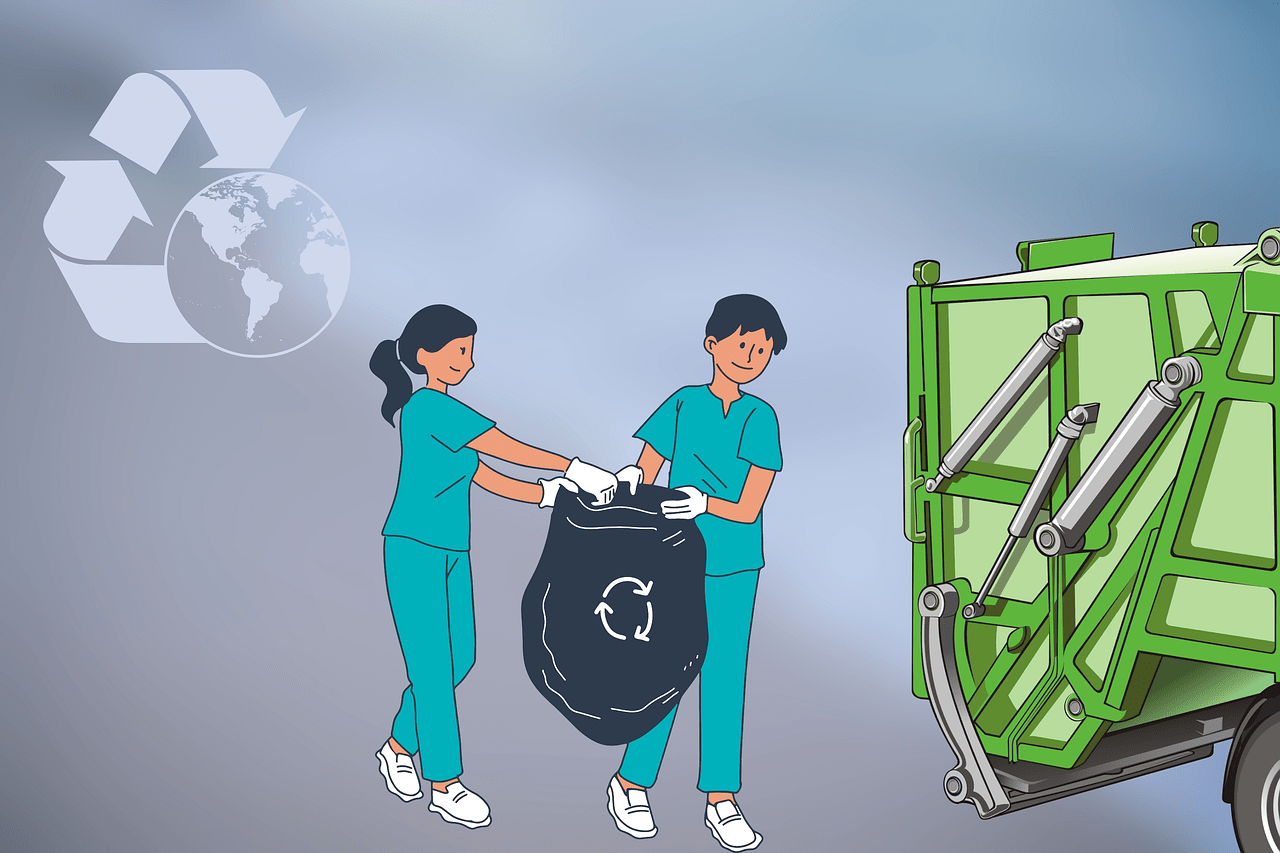In our day-to-day lives at school, each of us has the power to make small, meaningful changes that collectively lead to a significant reduction in our environmental footprint. By adopting eco-friendly habits, such as using reusable water bottles, opting for digital assignments over paper ones, and participating in recycling programs, we can contribute to a greener, healthier planet. It’s about making conscious choices that become second nature in our routines. Together, let’s explore practical and effective ways to lessen our impact on the environment while fostering a more sustainable school community. How can we reduce our environmental impact at school? It’s a question that many students, educators, and parents are asking as they become more aware of the pressing need to protect our planet. Whether we are in elementary school, high school, or even college, every little bit counts when it comes to reducing our carbon footprint. Let’s dive into various practical steps we can all take to make our schools more eco-friendly.

Why Should We Care About Reducing Our Environmental Impact?
First things first, it’s essential to understand why we should care about our environmental impact at school. Schools are institutions of learning, but they also consume a significant amount of resources and generate a large amount of waste. By making simple changes, we can reduce this waste, conserve resources, and serve as role models for sustainable living.
A Call to Action
When we reduce our environmental impact, we’re not just helping the planet. We’re also fostering a culture of responsibility and empathy in our communities. This collaborative effort can inspire us and others to take more steps toward living sustainably.
Reducing Waste
One of the most straightforward ways to reduce our environmental impact at school is by minimizing waste. Let’s look at some practical solutions.
Implementing Recycling Programs
If our school doesn’t already have a recycling program, it’s crucial to start one. Many recyclable materials, such as paper, plastic, and aluminum, are used daily in schools. By establishing designated recycling bins and educating everyone on what can and can’t be recycled, we contribute significantly to reducing waste.
| Material Type | Examples | Recycling Tips |
|---|---|---|
| Paper | Notebooks, Flyers | Ensure it’s clean and free from food or grease stains. |
| Plastic | Water Bottles, Containers | Check for the recycling symbol and rinse thoroughly. |
| Aluminum | Soda Cans, Foil | Crush cans to save space, and make sure they’re empty. |
Reducing Paper Usage
We consume an enormous amount of paper in schools. To cut back:
- Use digital textbooks and assignments whenever possible.
- Print double-sided handouts.
- Encourage note-taking on tablets or laptops.
Composting
Food waste is another significant issue in many schools. Setting up a composting program in the cafeteria can turn food scraps into valuable compost for the garden. We can work with science teachers to create a composting curriculum that teaches students about the benefits of composting.
Conserving Energy
Schools are large buildings that require a lot of energy for heating, cooling, lighting, and powering various devices. Here are some ways to conserve energy.
Switching to LED Lighting
LED bulbs consume significantly less energy than traditional incandescent bulbs and last much longer. Replacing old lighting with LED options is a simple yet effective way to reduce energy consumption.
Utilizing Natural Light
Taking advantage of natural light can drastically cut down on electricity usage. Keeping blinds and curtains open during the day will let more sunlight in, reducing the need for artificial lighting.
Installing Programmable Thermostats
Heating and cooling represent a substantial portion of a school’s energy consumption. By installing programmable thermostats, we can ensure that heating and cooling systems are used more efficiently. For instance, temperatures can be adjusted based on whether school is in session or not.
Encouraging Carpooling and Public Transportation
Reducing the number of cars used to get to school cuts down on greenhouse gas emissions. Organizing carpool groups or encouraging the use of public transportation can make a big difference.
Promoting Sustainable Food Practices
The food we consume has a considerable environmental impact. Schools can promote more sustainable food practices in various ways.
Reducing Meat Consumption
Meat production is a major contributor to greenhouse gases. Incorporating more plant-based meals into the school menu can help reduce this impact. Even having one “Meatless Monday” can make a difference.
Sourcing Local Produce
Buying local produce reduces the carbon footprint associated with transporting food long distances. We can support local farmers by featuring locally grown fruits and vegetables in the school cafeteria.
Installing a School Garden
A school garden serves multiple purposes. It not only provides fresh produce but also educates students about agriculture and sustainability. Gardening can be incorporated into science classes, and the produce can be used in school meals.

Reducing Water Usage
Water conservation is another important aspect of reducing our environmental impact. There are several strategies schools can implement to save water.
Fixing Leaks
A single dripping faucet can waste gallons of water over time. Regular maintenance checks can help identify and fix leaks promptly, saving a substantial amount of water.
Installing Low-flow Fixtures
Low-flow faucets, toilets, and urinals use significantly less water than standard fixtures. Upgrading to these efficient fixtures ensures we conserve water with every use.
Encouraging Shorter Showers
If our school has shower facilities, encouraging shorter showers can also help save water. This can be promoted through awareness campaigns and incentives.
Raising Awareness and Education
Raising awareness about environmental issues is crucial for fostering a culture of sustainability at our school. Education is the key to long-term change.
Eco Clubs
Starting an eco club can provide a platform for students passionate about the environment to share ideas, organize events, and lead initiatives. These clubs can coordinate clean-up drives, awareness campaigns, and recycling programs.
Environmental Education Curriculum
Incorporating environmental topics into the curriculum can inform and inspire students. Subjects like science, geography, and social studies can include lessons on climate change, conservation, and sustainable living practices.
Guest Speakers and Workshops
Inviting environmental experts to speak at school or organizing workshops on sustainability can provide valuable knowledge and inspire action. These events can be tied to existing curricula or special occasions like Earth Day.

Practical Tips for Students, Teachers, and Parents
It’s easier to make a collective impact when everyone is on the same page. Here are some practical tips for students, teachers, and parents.
For Students
- Bring Reusable Bottles and Containers: Instead of disposable plastic bottles and bags, carry reusable ones.
- Be Mindful of Energy Use: Turn off lights, computers, and other electronic devices when not in use.
- Participate Actively in School Programs: Join or support the school’s eco club and take part in environmental initiatives.
For Teachers
- Integrate Sustainability into Lesson Plans: Use projects and examples that highlight environmental issues and solutions.
- Lead by Example: Show students how to practice what you preach by being mindful of your energy and resource usage.
For Parents
- Encourage Sustainable Practices at Home: Practice recycling, composting, and conserving energy at home, and explain why it’s important.
- Support School Initiatives: Contribute to school sustainability programs through volunteering, donations, or advocacy.
Inspiring Real-World Examples
Examples of schools that have successfully reduced their environmental impact can serve as powerful inspiration.
Green School in Bali
The Green School in Bali is renowned for its commitment to sustainability. The school is constructed entirely from bamboo, features composting toilets, and runs on renewable energy from solar panels and a micro-hydro system. This school serves as a model of what is possible when a whole community commits to sustainability.
The Eco-Schools Program
Eco-Schools is a global program that provides a framework for schools to integrate sustainable principles into their operations and curriculum. Schools that meet specific criteria can receive the coveted Green Flag award. This program has enabled thousands of schools worldwide to compete at being more eco-friendly and demonstrates that impactful changes are possible almost anywhere.

Overcoming Challenges
Although reducing our environmental impact at school is beneficial, it is not without its challenges.
Cost Constraints
Implementing sustainability programs can be costly. However, many initiatives, such as carpooling and reducing waste, have minimal upfront costs. Grants and fundraising can also help cover expenses for larger projects, such as installing solar panels or starting a school garden.
Resistance to Change
Not everyone may be on board with new initiatives. Communication and education are key to overcoming resistance. By highlighting the benefits and involving everyone in the planning process, we can foster greater support and collaboration.
Long-term Vision and Sustainability Goals
Establishing clear, long-term sustainability goals can guide our efforts and keep us on track.
Commit to Continuous Improvement
Sustainability is an ongoing journey. Regularly assess and update our goals to adapt to new challenges and opportunities. Celebrate milestones and successes to keep the momentum going.
Engage the Whole Community
A sustainable school requires the involvement of students, teachers, parents, and local community members. Hosting community events, sharing progress, and soliciting feedback will help ensure broad-based support and engagement.
Measure and Track Progress
It’s essential to track our progress to understand what works and where we can improve. Create a system for monitoring key metrics, such as energy consumption, waste reduction, and water usage. Share these findings regularly with the school community to maintain transparency and accountability.

Conclusion
Reducing our environmental impact at school is a collective effort that benefits not just our immediate environment but also sets a positive example for future generations. By starting small and gradually implementing more substantial changes, we can make our schools more sustainable, eco-friendly places of learning. Let’s commit to taking action today—every step we take brings us closer to a greener, cleaner future.



